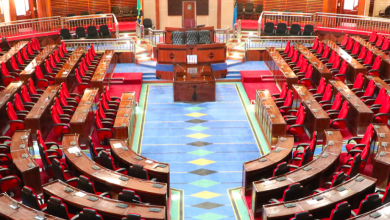Plans-to-prosperity: Curing execution disease for Vision 2050

DAR ES SALAAM: IN the heart of Dar es Salaam, on a rare wintry windy Thursday afternoon, I sat across from an investor from Far East flown in to explore opportunities. He had read about Tanzanian Vision 2050.
He was impressed—like many others—by our strategic goals: Industrial transformation, digital innovation, environmental stewardship and inclusive prosperity.
But then he leaned back and asked, “Tell me honestly, will it happen this time?” I paused. It wasn’t a question about resources or political will.
It was about execution. About whether Tanzania could finally deliver on the promises woven into our beautiful plans.
And he had a reason to ask. For decades, Tanzania has built a reputation as one of the continent’s best planners.
From national five-year plans to Vision 2025 and now Vision 2050, our documents are thorough, visionary and inspirational.
But when it comes to translating those plans into tangible, timely, and scalable action, the story has often faltered.
Indeed, the same concern was raised by private sector representative when delivering a speech during the Vision 2050 launch.
This is the execution disease—a systemic pattern where ambition meets inertia and plans become paper trophies rather than instruments of transformation.
ALSO READ: VISION 2050: Tanzania plans deeper PPPs adoption
The cost of inaction is rising The stakes are higher now than ever. Vision 2050 is not just another development plan—it’s a generational contract, promising a future of shared prosperity, environmental balance and modernity.
But these promises require not just dreams, but deadlines. Not just intentions, but institutions. Not just allocations, but accountability.
And herein lies the warning from capital markets—a world built on trust, discipline and performance.
As Tanzania begins to mobilise funds from local and international investors the cost of poor execution could be catastrophic. Unlike aid or concessional finance, capital markets expect returns.
Delays, inefficiencies, or project failures erode investor trust, lead to higher risk premiums and lock the country out of affordable financing for years. Investors don’t invest in good intentions—they invest in track records.
Execution builds or breaks confidence Let’s consider a hypothetical but plausible example. Suppose Tanzania issues an Infrastructure Bond to build a series of rural industrial parks.
Investors subscribe, trusting the government’s blueprint. But two years later, only 30 per cent of the projects are complete.
Procurement bottlenecks, delays, poor project management and weak coordination between agencies are cited as the causes.
The market responds. Bond yields on Tanzanian instruments spike. Credit rating agencies issue cautionary outlooks.
The next time the country goes to raise capital–even for a well-structured, bankable project—the appetite is low and the pricing is harsh. In contrast, imagine that same bond execution goes flawlessly.
Projects are delivered ahead of time, reports are transparent, procurement is digitalised and the social impact is measurable. The reputation of Tanzania changes.
We become not just good planners but trusted implementers. Curing the execution disease So how do we cure this deeprooted illness? It starts with a few bold prescriptions:
1. Institutional Strengthening: We must empower implementation agencies with autonomy, talent and digital tools to manage, monitor and report on projects in real-time.
2. Performance Culture: Civil service must evolve from compliance-driven to results-driven. Targets must be clear, tracked and rewarded. Failure to deliver without just cause must carry consequences just like in the private sector.
3. Investor Engagement: Capital market investors are no longer passive lenders. They expect active dialogue, disclosures, ESG alignment and grievance mechanisms. Building trust means treating investors as development partners, not mere financiers.
4. Project Pipeline Discipline: Not every project belongs in the capital markets. Projects must be technically sound, financially viable and legally structured to attract funding. There must be a centralised, transparent pipeline of “bankable” Vision 2050 projects.
ALSO READ: Governance, peace, justice anchored in Vision 2050
5. Digital Execution Platforms: Real-time digital dashboards that track project progress, flag delays and enable citizen feedback can be powerful accountability tools.
Tanzania can leapfrog traditional bottlenecks by embracing execution tech.
The hidden cost: Lost generations The cost of poor execution is not just financial, it’s deeply human.
It’s the rural child who grows up without access to clean water because the water supply project stalled. It’s the youth in Mbamba-Bay whose vocational centre was budgeted but never built.
It’s the patient in Tabora who still walks miles to a dispensary that remains on the drawing board.
Each delay has a face. Each failed project has a cost that no spreadsheet can fully measure.
A capital markets country If Tanzania is to become a true capital markets country – where long-term savings are converted into productive investments, where global financiers see opportunity rather than risk–we must develop a national reputation for delivery. Vision 2050 is the right plan.
It is bold, inclusive and forwardlooking. But its fate now rests not in how often we talk about it but in how fiercely we act on it. Let us rise to the moment. Let us make execution our new national identity.
Let every shilling raised through capital markets tell a story of a project delivered, a life improved and a promise kept. The time for planning has passed. Now, we execute.





